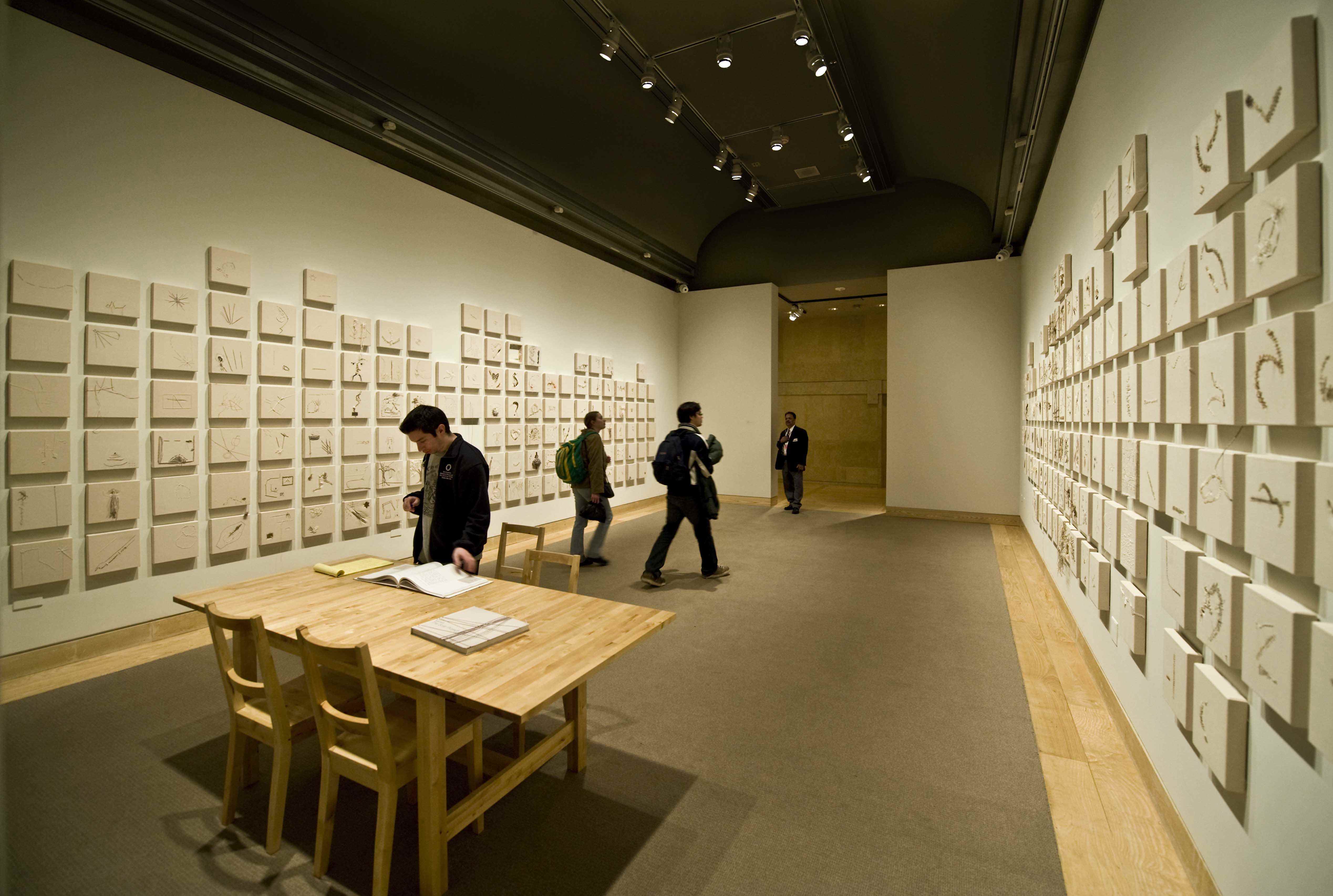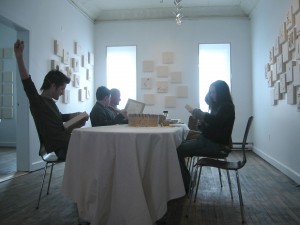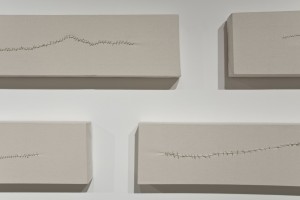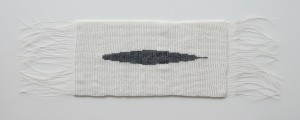[While I haven’t seen this show in New York, I know the artist’s work through her representation at local gallery Art Mûr in Montreal. She’s a wonderful artist doing thoughtful work that both has contemporary and historic relevance; it’s so great to see her getting attention in NYC]
Recognizing the depth of her practice and the impact of her art, The Smithsonian National Museum of the American Indian in New York recently invited Nadia Myre (along with Alaskan Sonya Kelliher-Combs) to initiate Hide: Skin As Material and Metaphor, their current multi-show series. Scar Tissue, the first solo showing of Myre’s work in New York City, presents a retrospective of the Montreal-based artist’s powerful and evocative image-creations of the past five years (including The Scar Project, Landscape of Sorrow and Scarscapes). Myre’s fixation with scars, along with their ability to evoke ideas of trauma, history and healing, have led her to an ongoing exploration of subtly altering a formal language to explore its consequent impact. The resulting art not only modernizes traditions of the artist’s Anishinaabe heritage, but also strikes to the core of human experience.

The Algonquin artist began by hosting workshops for The Scar Project (2005-) where she collected the stories and scars of over 500 participants. They recreated their wounds, either physical or emotional, by slashing and sewing raw canvas. The artist here acted as catalyst initiating to a communal – almost tribal – process of creation and healing. She recognized and uncovered a common language, memorializing and recreating a universal experience.

Since this beginning, Myre has experimented with painting and beadwork to further deepen the potency of the scar in her artistic practice. For the artist, exploring ideas of loss and longing have led her to expose the human need for healing as well a deeper continuous desire, a “longing [that] is the thread that binds us to this world.” In Landscape of Sorrow (2009), Myre created six elongated canvases revealing extended repaired scars. She invoked the power of the scar in expanded dimensions, a mountain-like silhouette, inhuman in its size, bemoaning a certain irreparability.

In Scarscapes (2009-2010), the most recent version of the project, Myre abstracted five recurring patterns of scars to create symbols. She used these generalized icons to create small loomed beadwork tapestries inspired by her native traditions. Alongside the display of these meticulous and intimate works of craft, the Algonquin artist printed monumental photographic enlargements of the same delicate works, exploding the intimate scale. The dichotomy of scales clashes the personal alongside the universal, the hidden versus the public, the precious against the commonplace. The artist has, in effect, created a fresh wound, bringing the experience of the scar to life by tearing the symbol apart through dual representation.

In her New York retrospective, Myre has brought her aboriginal traditions into a contemporary and universal space where they relate to a wider human experience of identity and history. She has thus unleashed the complexity of personal experience and the violence of survival.
Nadia Myre’s solo show, Scar Tissue, runs until August 1, 2010 at the George Gustav Heye Center, Smithsonian National Museum of the American Indian, New York, NY.





